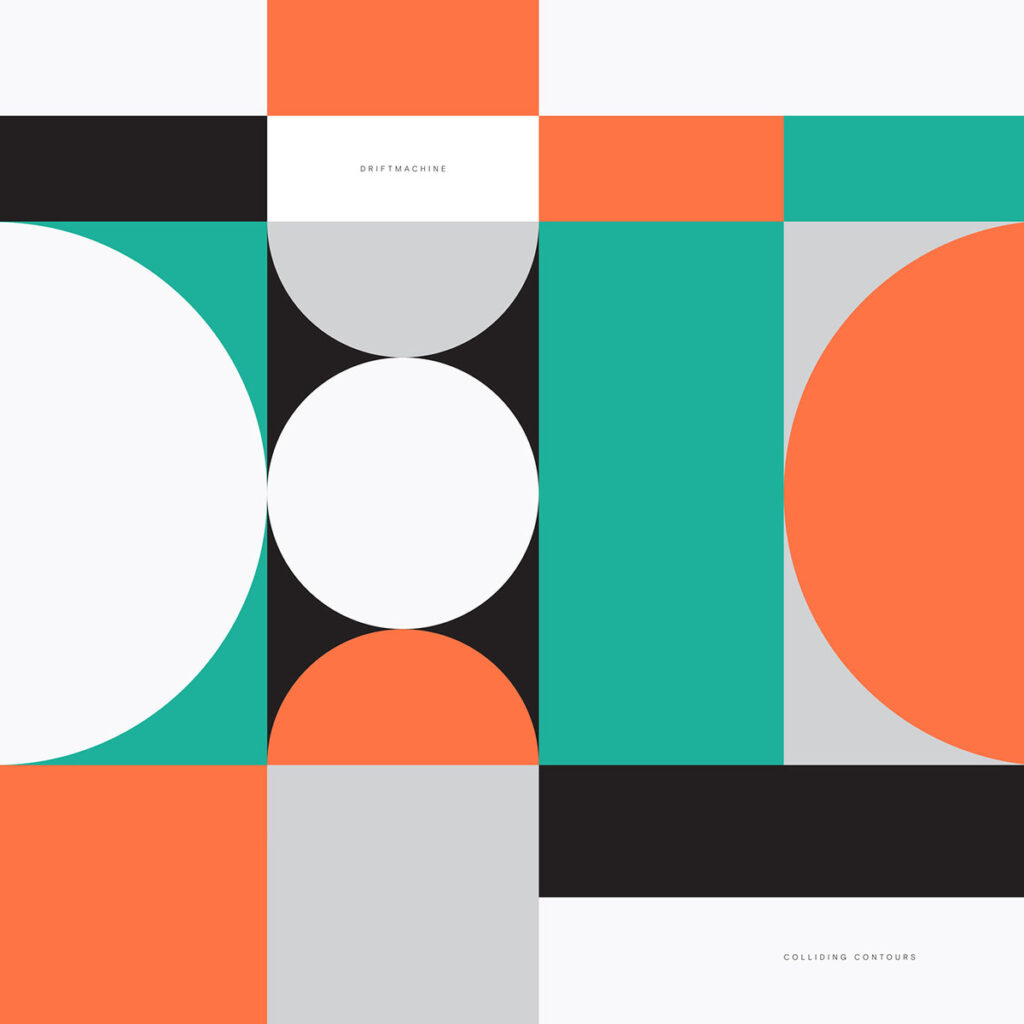And lo, the great modular renaissance rolls on, racks upon racks of wiry hardware embraced by both analogue gearheads and a wave of producers piqued by the compositional freedom and broad improvisational possibility therein. It’s flummoxing stuff – of a practical workshop held at London’s Beaconsfield this time last year, I understood not a jot – with a potential for boundless creative expression that can, inevitably, be tough to harness into something meaningful. Worldly proof that, actually, process rarely trumps product.
Given this, the restraint shown by Driftmachine on Colliding Contours – their second full length for Umor Rex – is refreshing. The Berlin-based duo of Andreas Gerth and Florian Zimmer are emphatic in their embrace of the platform, but bypass sprawling freakouts in favour of tracks built around terse rhythmic figures, dubwise bass and buried drones, overlaid with snatches of noise and glacial drift. Their music may be relatively conventional, but there’s an attention to detail and enough multifaceted flourishes to keep it well on the engaging side of understated.
‘Radiations’ is an auspicious start. Largely comprising neat, woodblock plunks and washes of irradiated synth that only lock into a defined structure after a couple of minutes, it’s a high point specifically for eschewing the more linear structures adhered to by most of the record, as well as the almost tactile sense of silence and spaciousness employed (reminiscent of Christopher Bissonnette’s modular powerhouse ‘Pitch, Paper & Foil’, snuck out on Kranky at the end of last year). These predilections for dead air and algorithmic-sounding construction are all too brief, and certainly warrant further exploration.
From there on in, Driftmachine take a more conventional, though no less enjoyable tack. The beatless ‘Sans Soleil’ is built largely on a single drone, occasionally interspersed with the visceral crackle of loose, malfunctioning electronics; an android cohort snapping ominously to life. Observant Sirens remains similarly mechanical, even when utilising the kind of hollow, organic percussion redolent of Shackleton or Muslimgauze. It’s dark but not unnerving, and more texturally synonymous with abstracted ambient noise and ‘concrete’ in parts than the barren post-club hinterlands the band has itself suggested.
‘Gaukelwerk’’s buried arrhythmic beats and briefly elegiac post-rock textures – the only outright pretty moment in the whole set – quickly segue back into a fug of gloomy cosmic flutter and robotic machinations pulled from Autechre’s coldest moments. Subsequently, the eight-ish minutes of cyberpunk pulse that comprise ‘Dogov Godov’ are rendered all the more workaday for being followed by ‘Lost Travelers’ – more slowburn drone, embellished with what sounds like a few heavily reverbed billiard balls being whacked together and a vibe not miles from Roll The Dice – and ‘Ambler’’s dreamy, slo-mo arpeggios. Closer ‘Nunc Stans’ loops back to where Radiations began; a slighter, more abstract piece that comes to an early crescendo before its signals flatline and drift off into the firmament altogether.
As that might sound, it’s all terribly atmospheric, drawing on a European vein of cosmic futurism while reserving any overt sci-fi references for the record’s retro artwork and vaguely ‘Dune-y’ track names (rather than the music, which remains evocative rather than kitsch). If anything, it all feels like a bedfellow to the warm but resolutely lifeless IDM of ‘Amber’ and ‘Incunabula’ that Autechre have since written off as overly cinematic (many would argue that they weren’t, and this certainly isn’t).
What remains most impressive is Gerth and Zimmer’s meticulous approach to track-building, something increasingly apparent on repeated listens. Despite a collage-like approach to song construction, basic shortform repetition lies at the heart of the record; an understandable by-product of the modular process, and an approach encapsulated in the duo’s description of their work as “perpetual motion sound structures” and “symetric”, constructed in a wilfully piecemeal fashion – tracks being systematically built and deconstructed like jigsaws – but no less painterly for it. In both tone and realisation, Colliding Contours offers a warm welcome from a very cold future.


